Investigating the movement and foraging ecology of reef manta rays (Mobula alfredi) in the Chagos Archipelago
2024
Dr. Joanna L. Harris
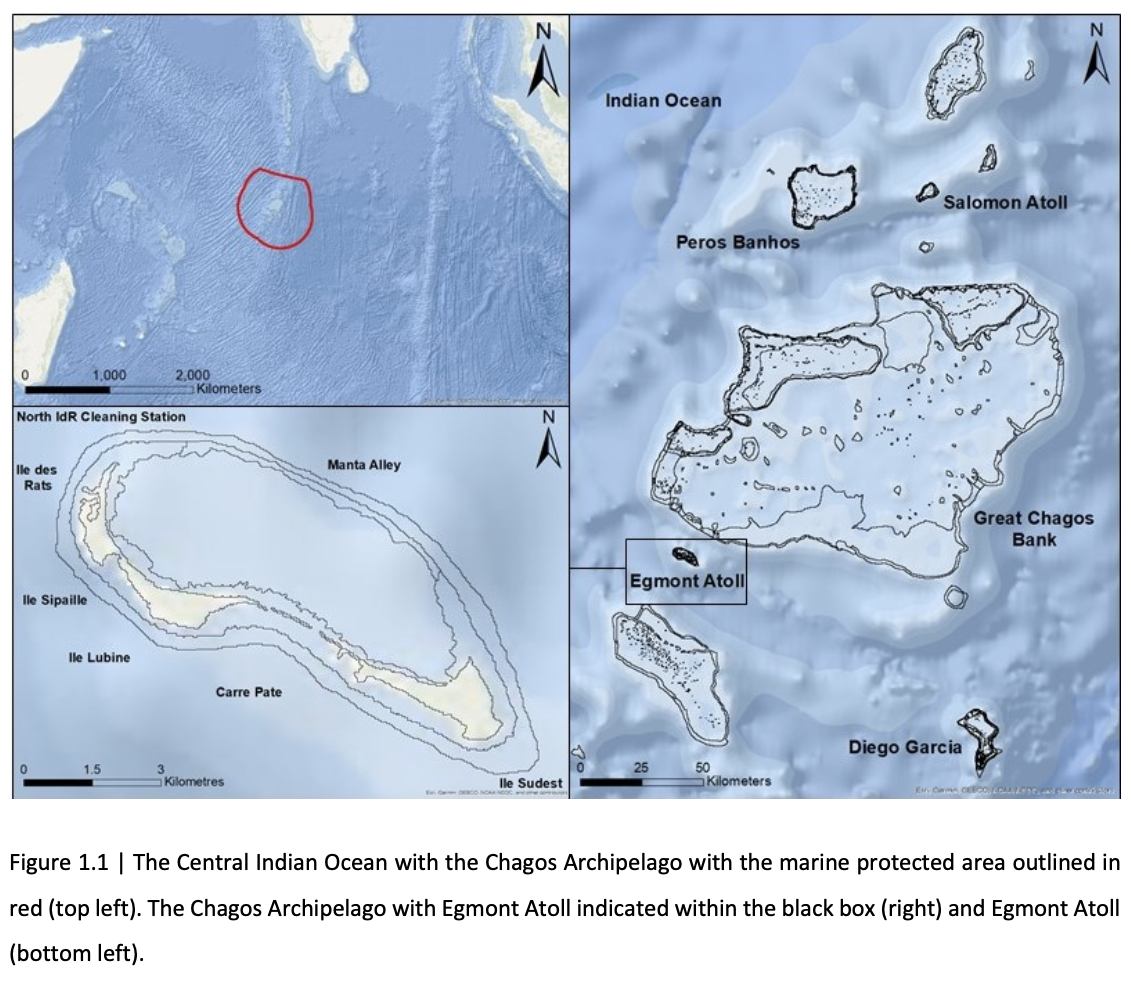
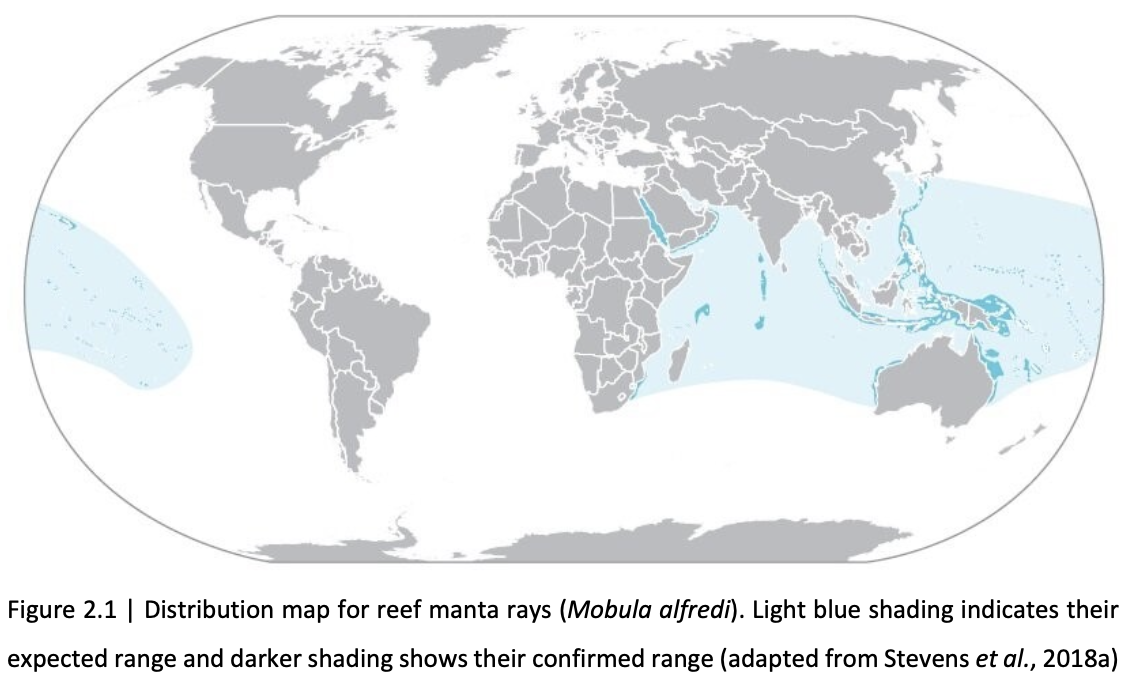
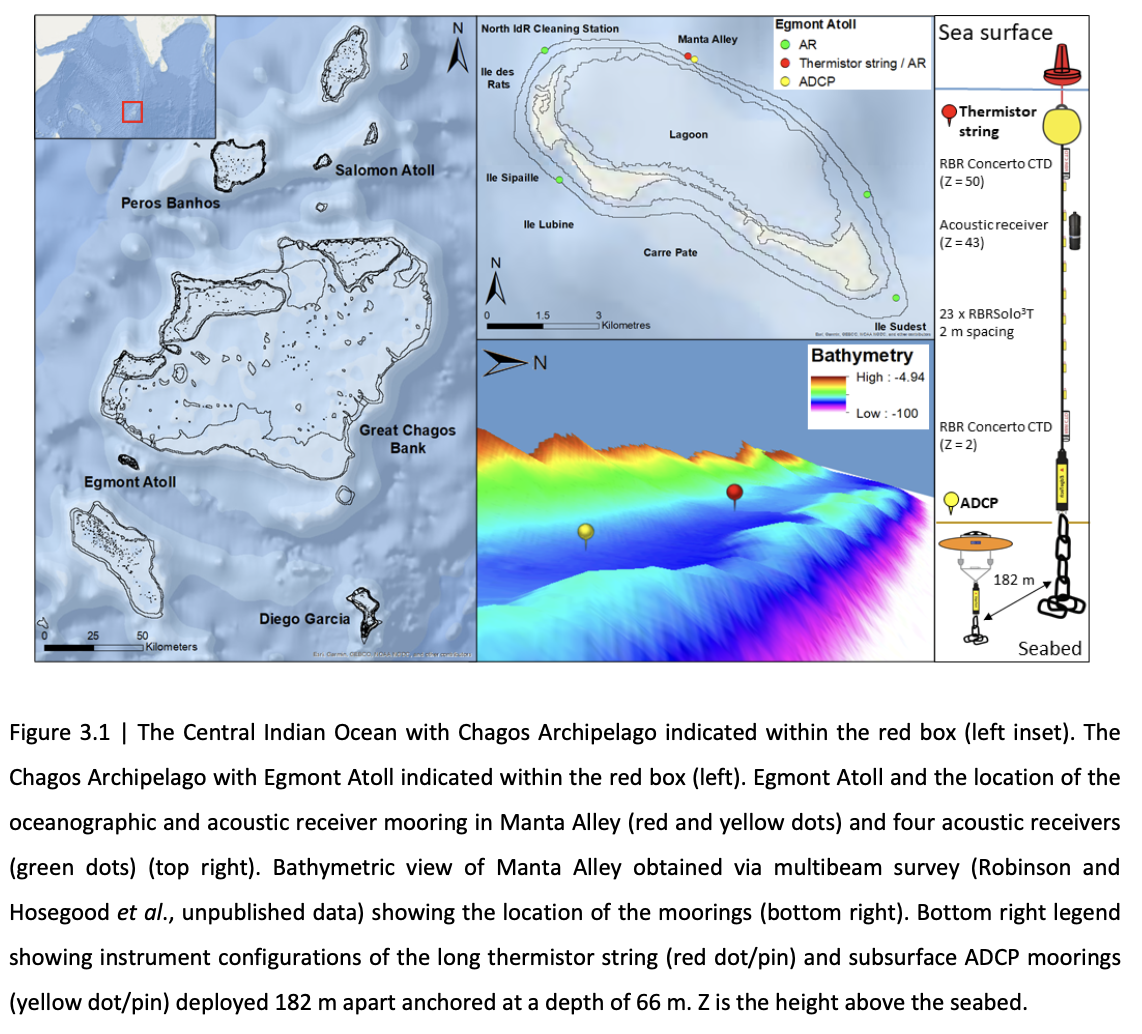
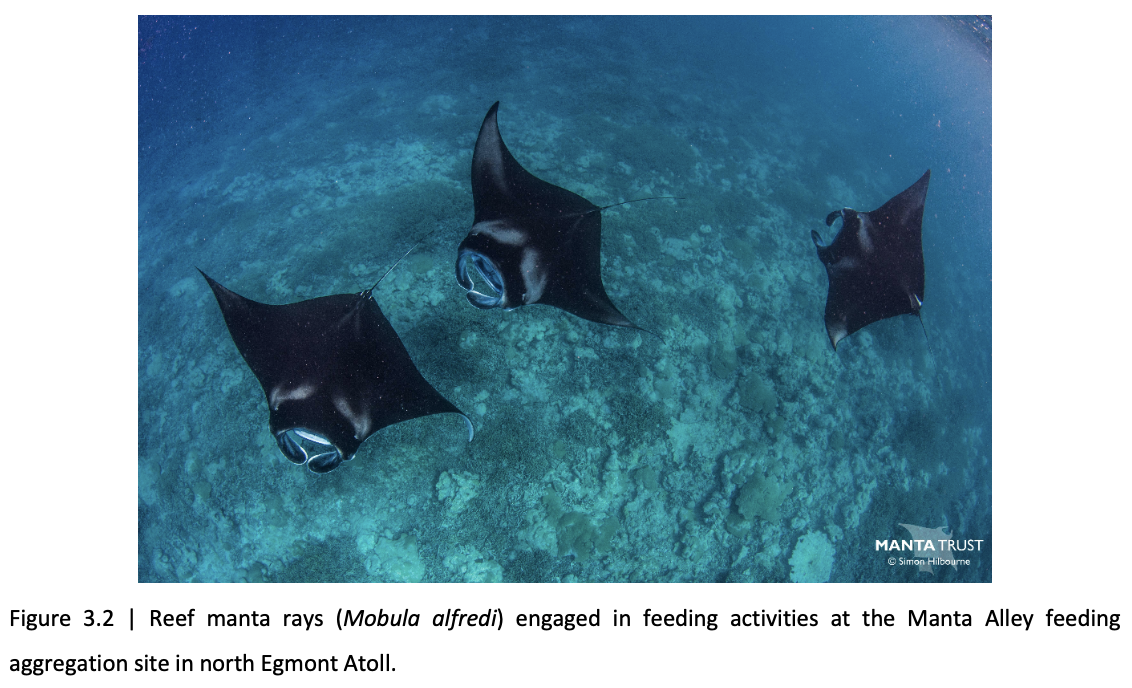
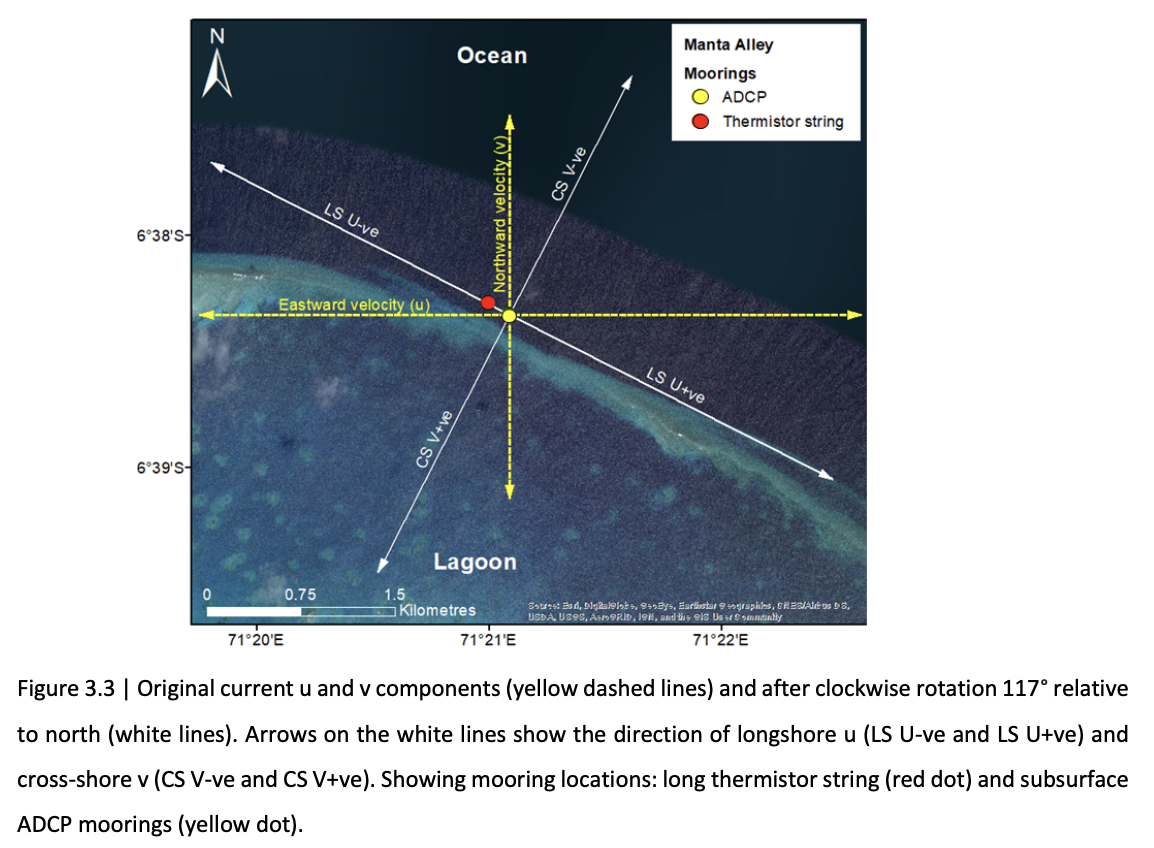
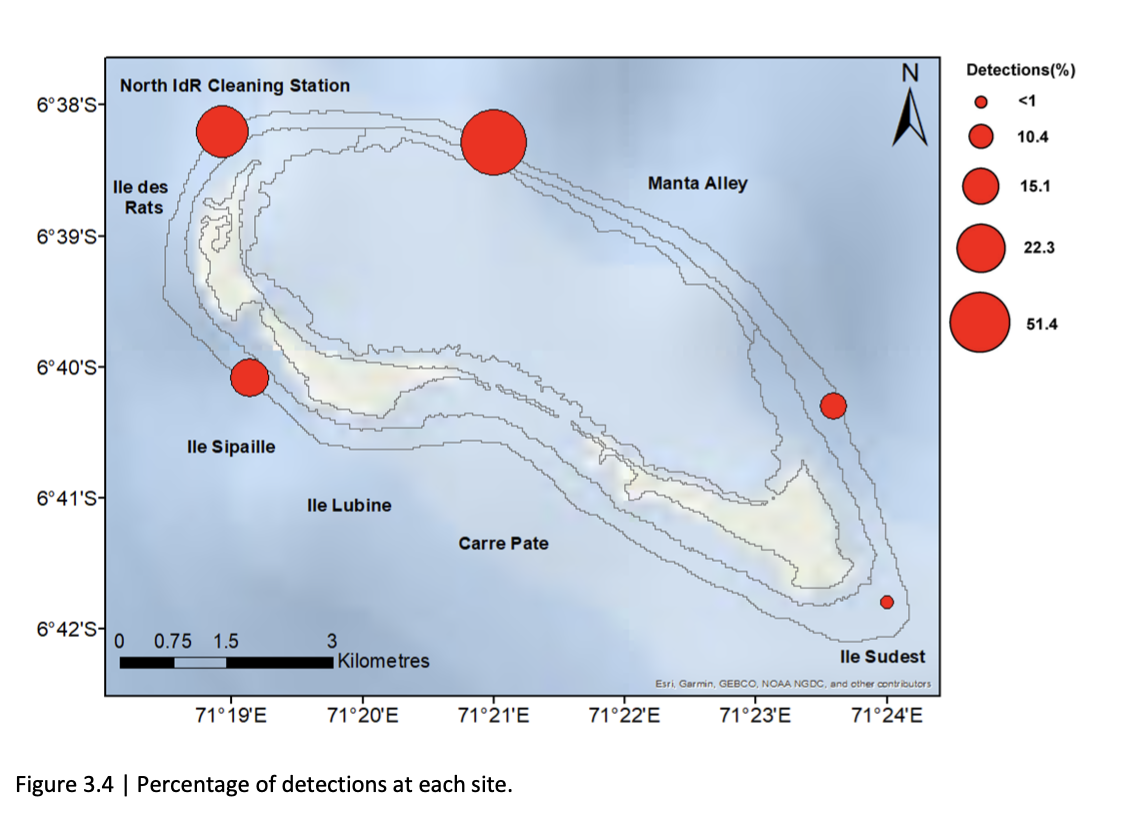
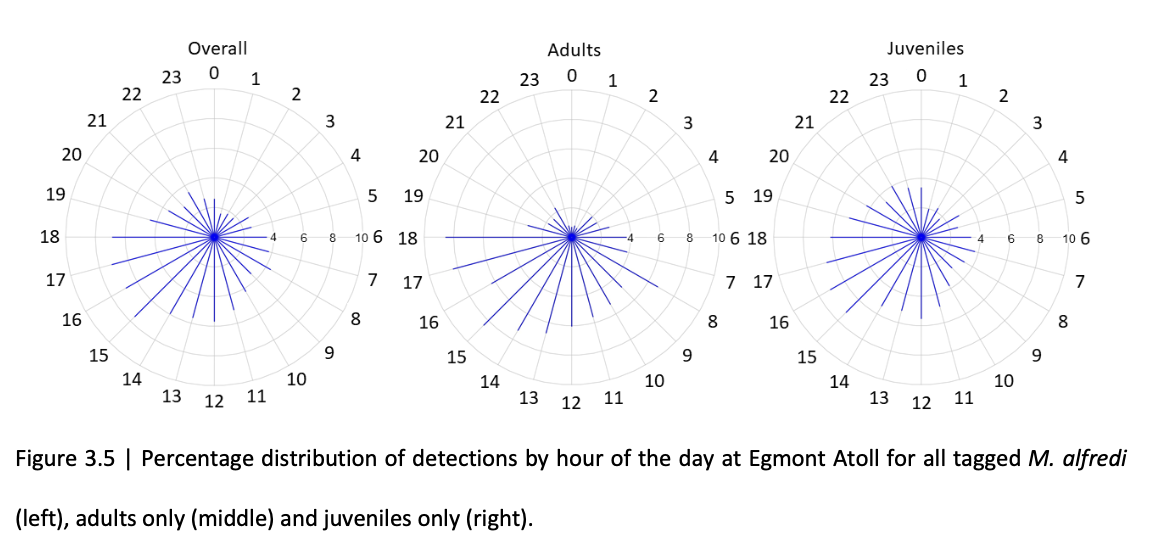
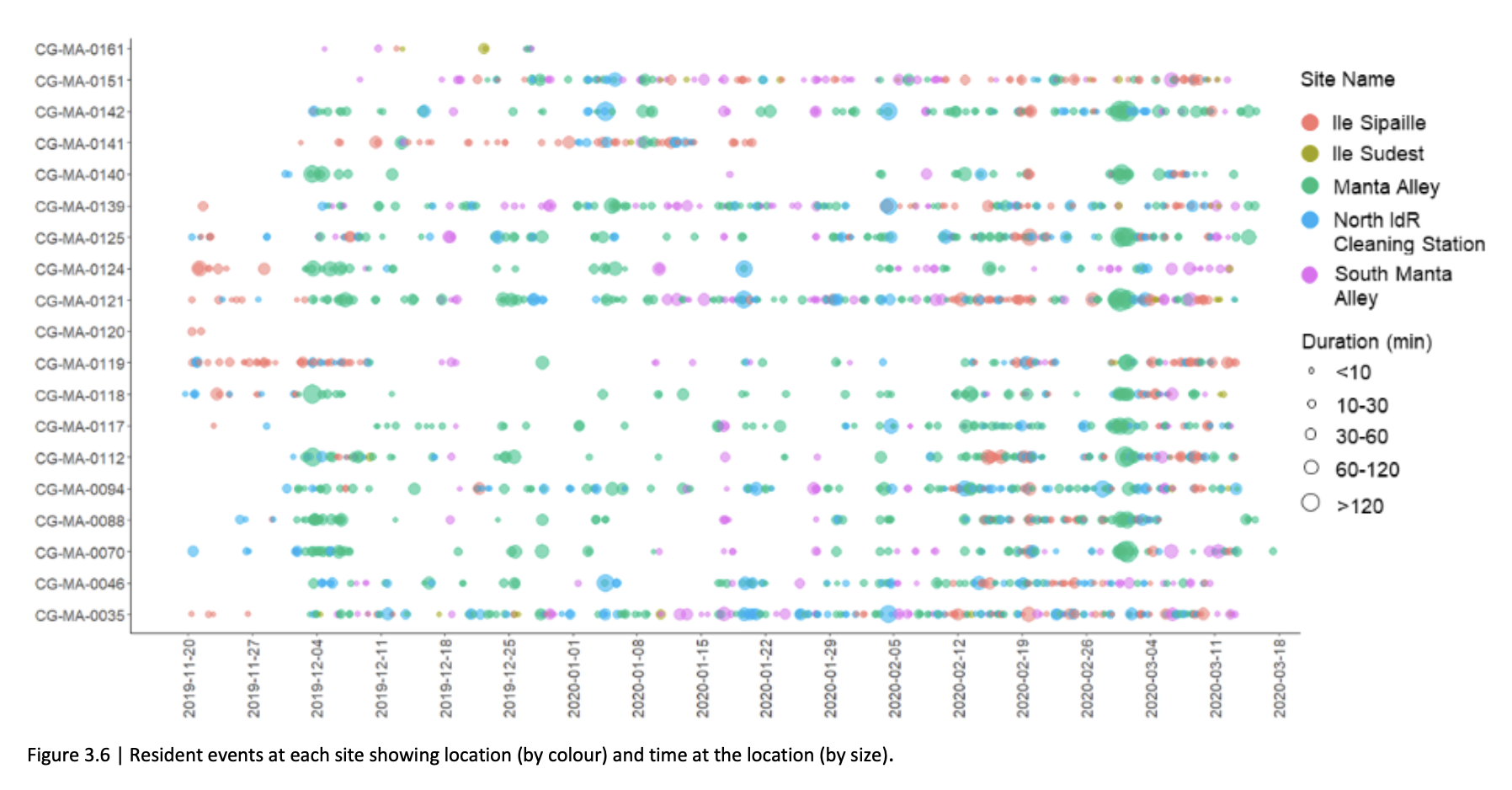
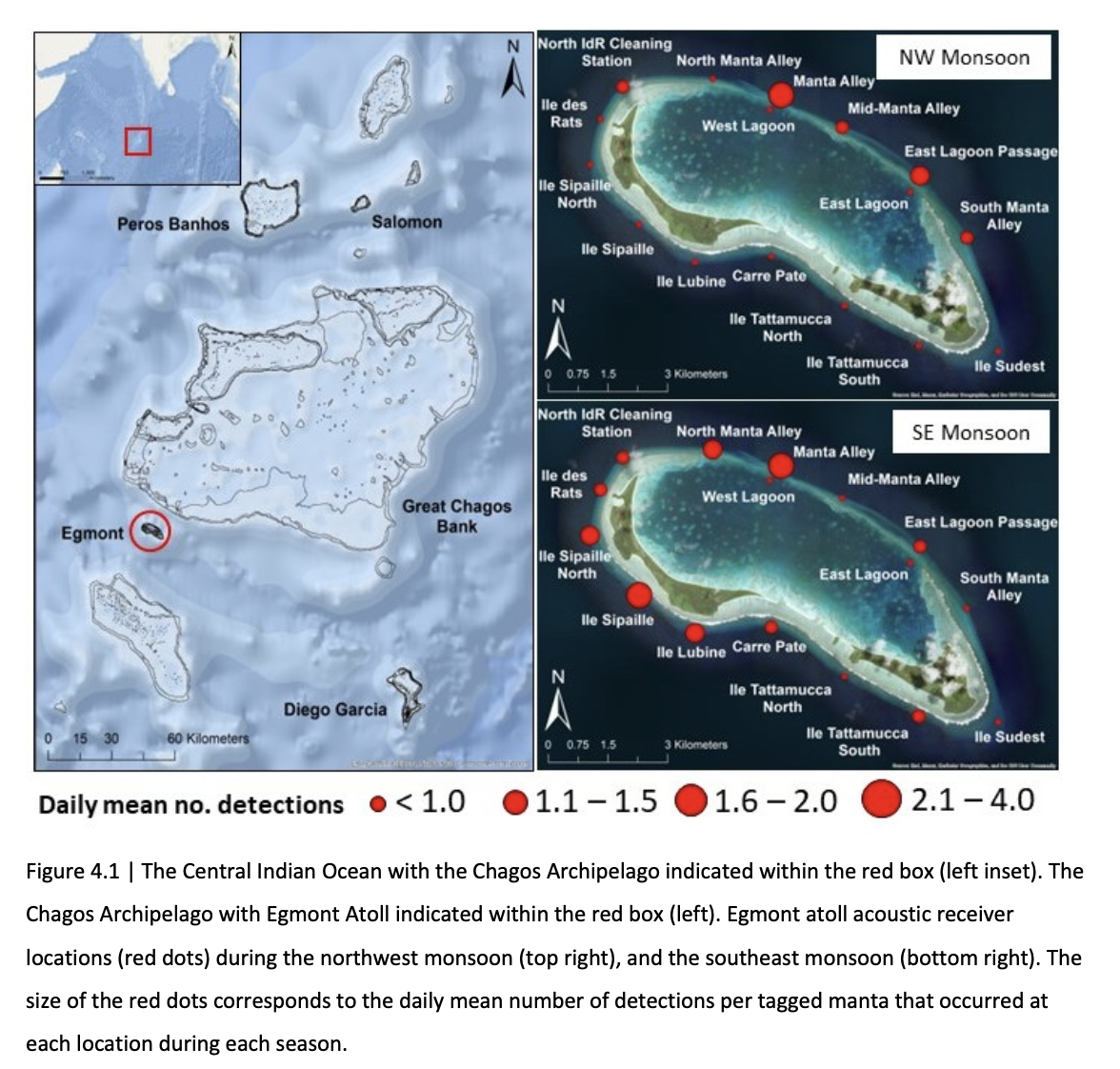
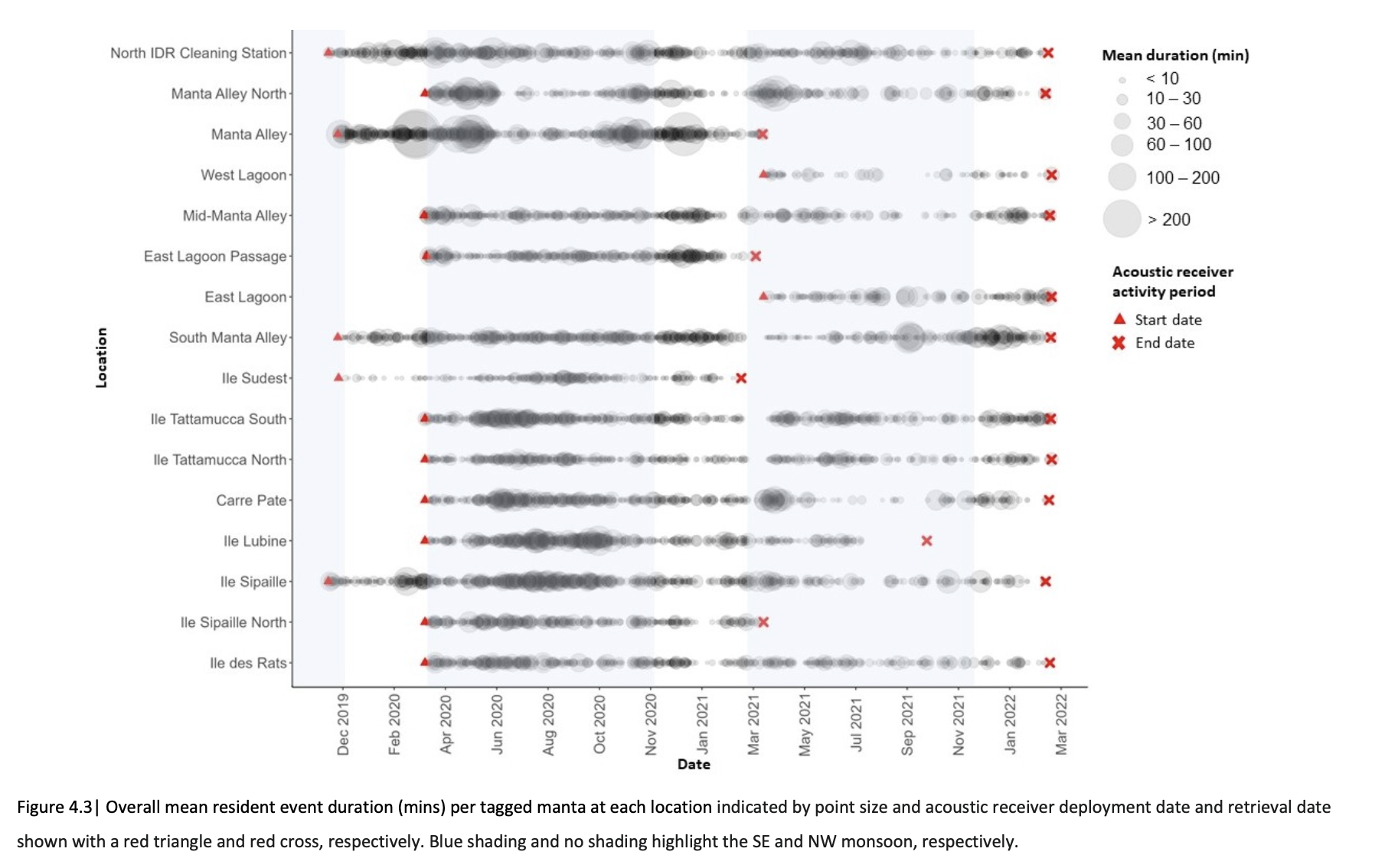
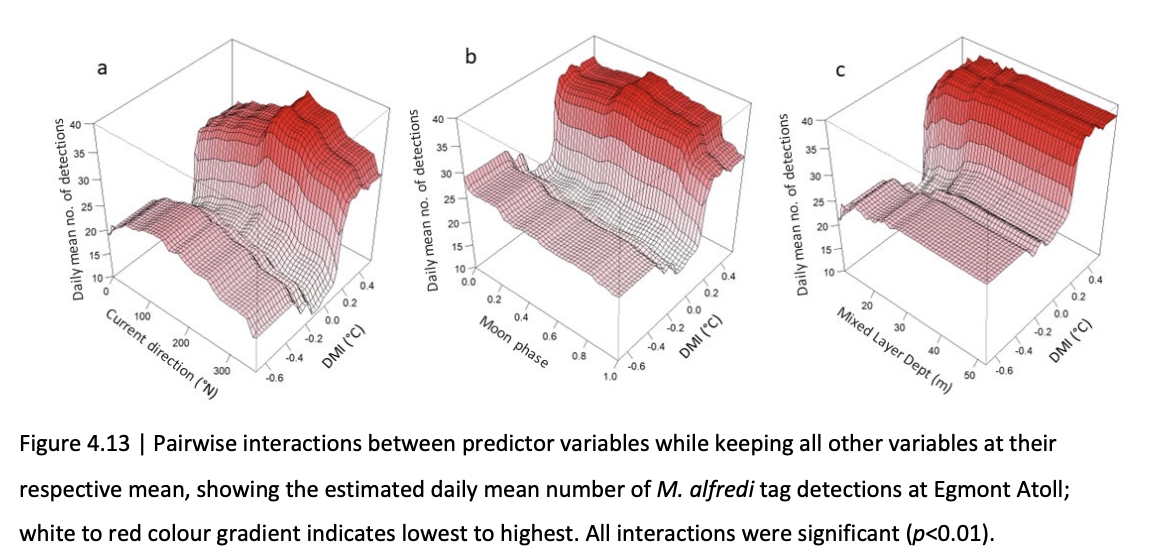
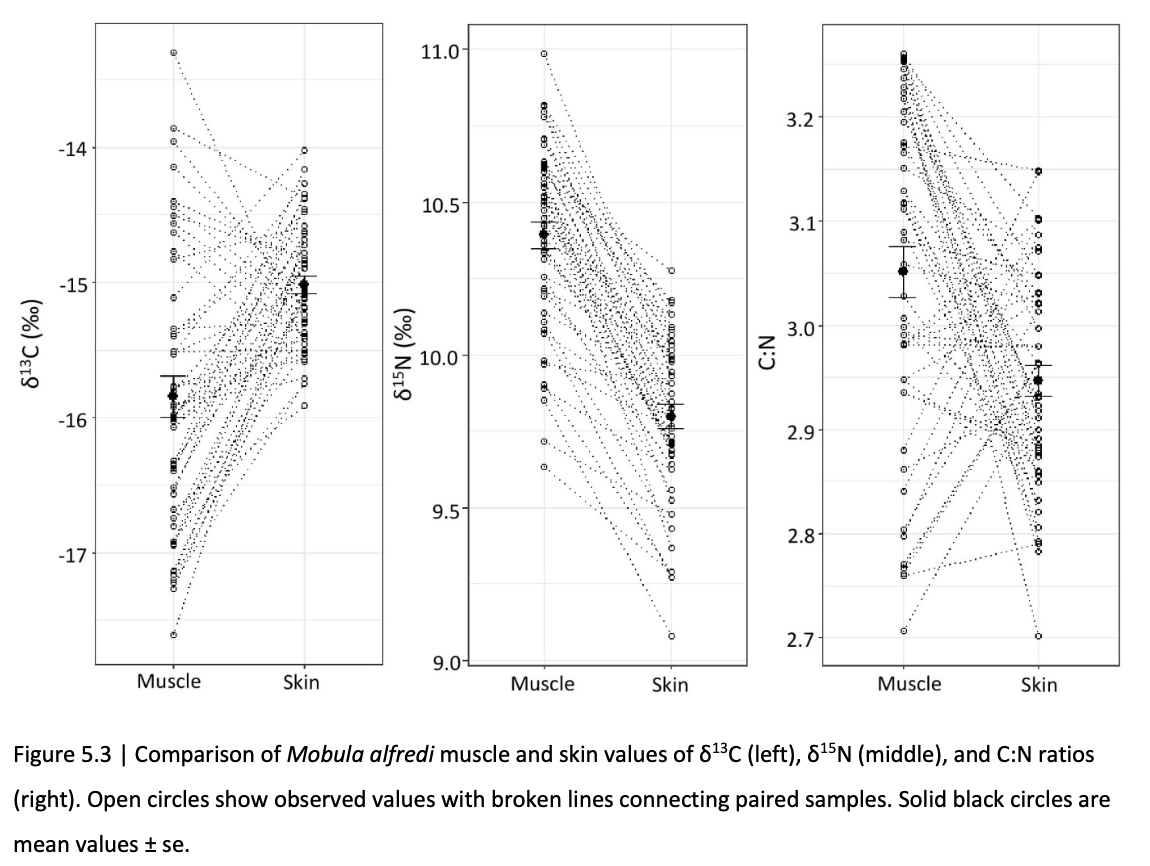
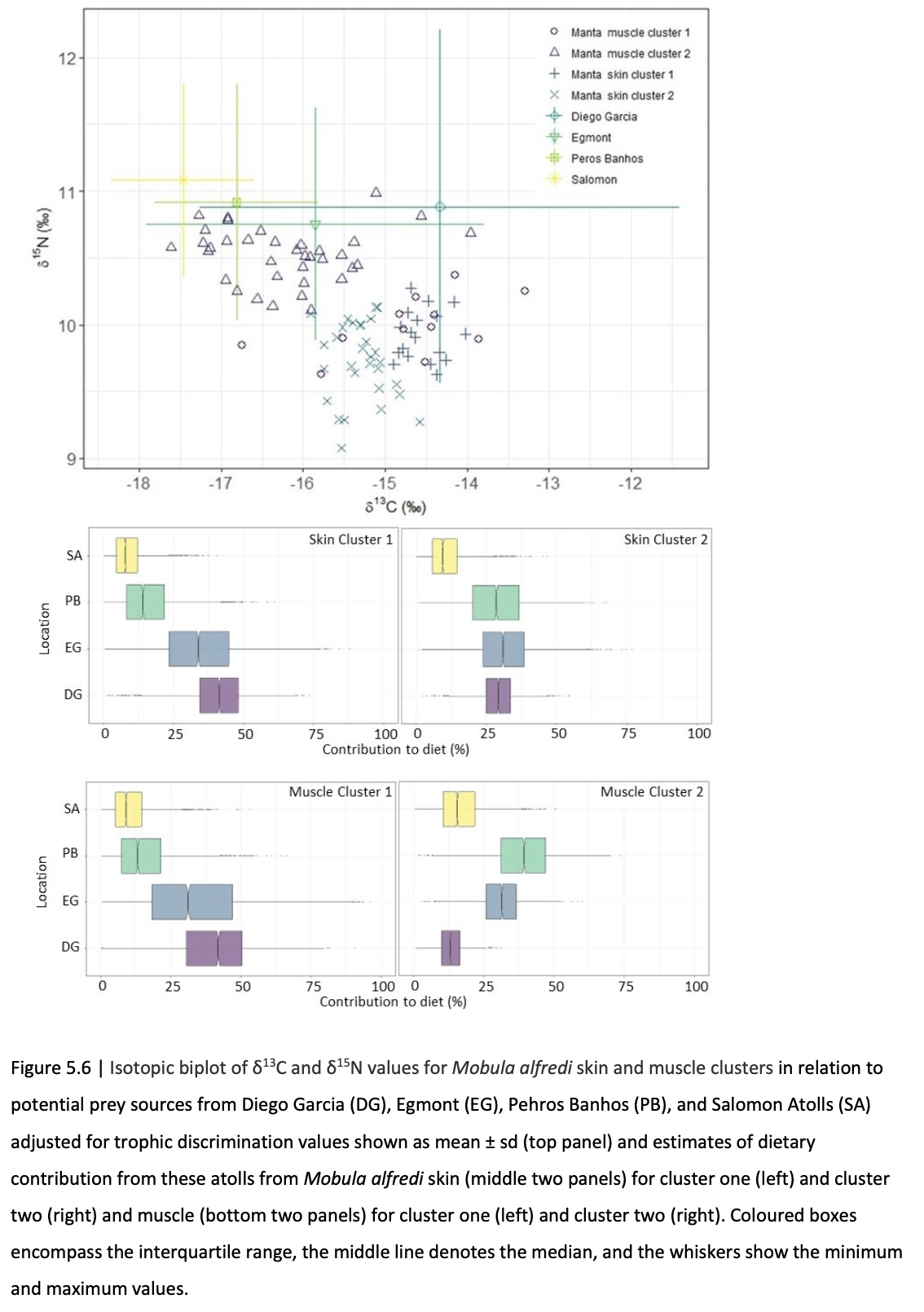
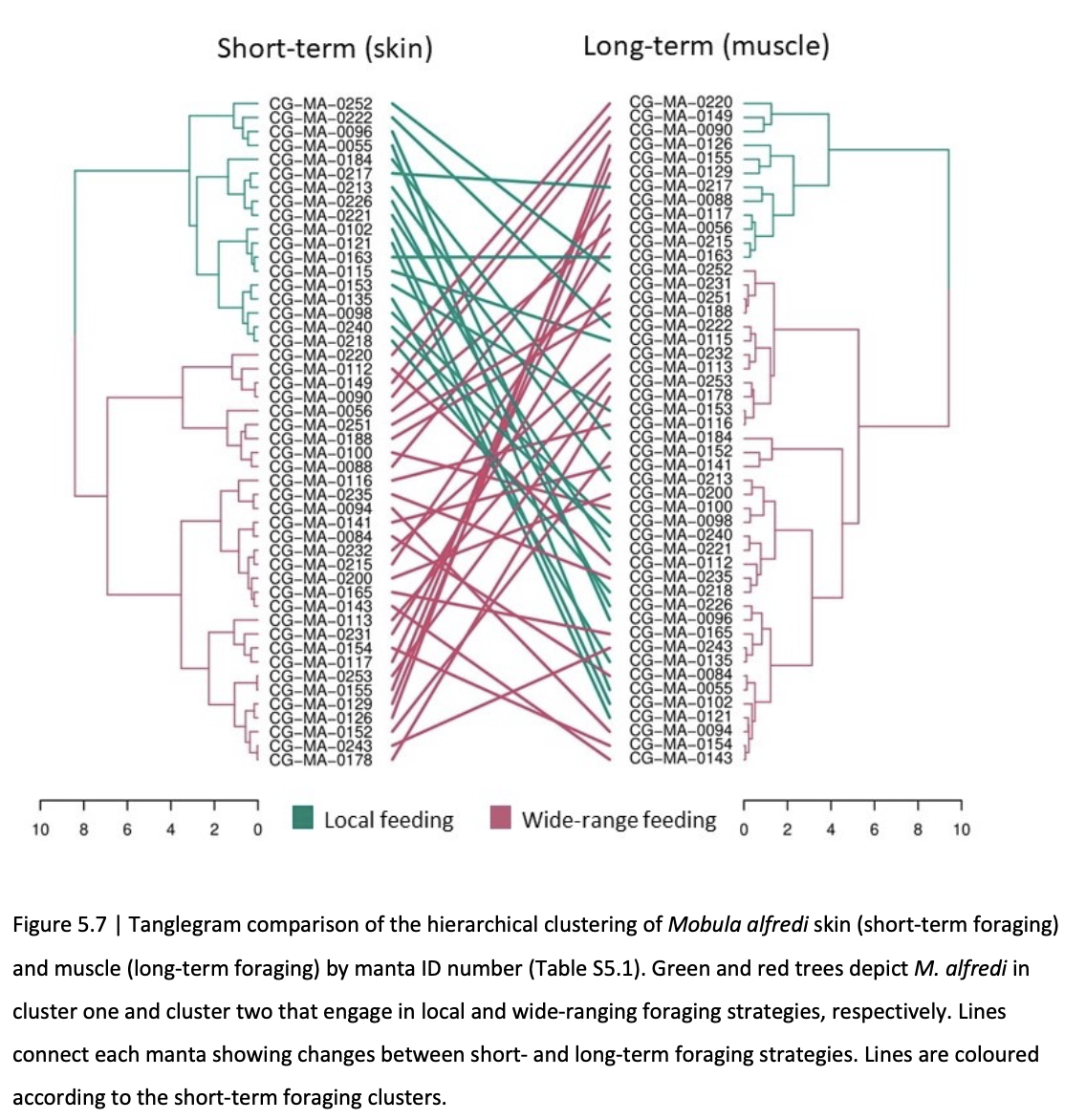
Summary: Reef manta rays (Mobula alfredi) are large, plankton-feeding fish found in the Indian and West Pacific Oceans. They form small, isolated populations with limited home ranges, often gathering at specific sites for feeding. They face threats from fisheries, particularly at aggregation sites, leading to local extinctions. The Chagos Archipelago, within a marine protected area (MPA), serves as a refuge, though it is threatened by illegal fishing and legal disputes. Research on Egmont Atoll identified key foraging behaviours and movement patterns, highlighting its critical role. Conservation efforts should enhance MPA enforcement and investigate manta movements across the archipelago for effective protection.
Abstract
“Reef manta rays (Mobula alfredi) are large zooplanktivorous elasmobranchs of the family Mobulidae. The species is dispersed throughout the Indian and West Pacific Oceans in small, isolated populations that tend to have a limited home range. Individuals within a population regularly visit specific locations to routinely engage in activities such as feeding, where they often exhibit aggregation behaviour. The species face a multitude of anthropogenic threats throughout their range, the most significant of which are target and bycatch fisheries from which they can be most at risk at aggregation sites. Due to their unsustainable depletion, particularly in the Indian Ocean, local extinctions have already occurred, and more are expected. Amid these threats and uncertainties, the Chagos Archipelago, situated in the central Indian Ocean, 500 km south of the Maldives and currently encompassed by a large no-take marine protected area (MPA), serves as a refuge that protects the species from further depletion. However, this sanctuary faces challenges such as illegal, unreported, and unregulated fishing (IUU) and legal disputes that may lead to changes in the MPA. These issues could weaken its protective capacity and expose the local and global M alfredi population to further risk of decline.
This research investigates and describes the movement and foraging ecology of the M. alfredi population of the Chagos Archipelago, which is crucial if informed conservation strategies are to be developed in the region. Primarily focusing on Egmont Atoll, an aggregation hotspot in the southwest of the archipelago, a combination of short- and long-term monitoring via acoustic telemetry, advanced oceanographic technologies and stable isotope analysis were used. Findings revealed how the species utilise space on multiple scales [fine- (<1 km), meso- (10 to 100 km) and broad-scale (>100 km)] and how this is associated with their foraging ecology.
Findings indicate that Egmont Atoll is a critical mesoscale habitat for this M. alfredi population as it is frequented all year round with notably high residency levels exhibited by most individuals (Chapter 4). Activity peaks were most pronounced during the southeast monsoon, particularly on the southwest of the atoll, while the northwest monsoon had higher activity levels in the northwest. Some sites did not show distinct seasonal patterns, likely due to localised fine-scale oceanographic processes. For example, at Manta Alley, a fine-scale aggregation hotspot on the northeast rim of the atoll (Chapter 3), foraging aggregations were associated with the breaking internal waves and cold-water bores that potentially transport zooplankton from the thermocline, providing temporally limited feeding opportunities enhanced by the tide. Overall, tag detections at Egmont Atoll were most probable during a positive phase of the Indian Ocean Dipole. This phase is characterised by a deeper thermocline (mixed layer) and lower levels of chlorophyll α in the Indian Ocean, indicating that M. alfredi may rely on Egmont Atoll and the enhanced food availability at sites such as Manta Alley when prey resources are scarce elsewhere in the archipelago.
Identifying other key habitats throughout the Chagos Archipelago is essential for developing broadscale protection strategies. Therefore, stable isotope analysis was used to investigate the population’s foraging ecology and identify probable feeding locations throughout the Chagos Archipelago (Chapter 5). The findings revealed that M. alfredi primarily feeds in nearshore environments, potentially in areas with enhanced primary production due to the coastal advection of nutrients in seabird guano during periods of high rainfall. Variations in isotopic values may be linked to changes in rainfall patterns associated with the Indian Ocean Dipole that may affect nutrient transport. Two distinct foraging strategies were identified: local and wide-ranging, whereby M. alfredi limited foraging to Egmont and Diego Garcia Atoll in the south of the archipelago or foraged in both the south and the north (Peros Banhos and Salomon Atoll), respectively. Most individuals switched between strategies, indicating that they frequently move between atolls, aiding nutrient transport across ecosystems but also increasing their vulnerability to widespread IUU activities.
Collectively, the findings of this research highlight the significant role of Egmont Atoll in supporting the M. alfredi population of the Chagos Archipelago and provide evidence that can help inform immediate and future conservation strategy development. In particular, M. alfredi are currently vulnerable to IUU activities; therefore, regular IUU enforcement patrols of Egmont Atoll are crucial. Furthermore, management of the MPA should prioritise safeguarding and effectively implementing no-take regulations within Egmont Atoll. Findings also highlight that further research on how M. alfredi utilise the northern atolls and migration routes is required to help establish the species' vulnerability to activities throughout the archipelago.”
About The Author - Dr. Joanna L. Harris
Joanna began snorkelling at just three years old and fell in love with the ocean. Spending every moment possible in the water earnt her the childhood nick name ‘water baby’. After spending many years travelling the world to snorkel and SCUBA dive, she naturally developed a passion for marine conservation. Joanna studied for a degree in marine conservation at Cornwall College, Newquay where she became an advocate for the urgent need for reef manta ray protection and began volunteering for the Manta Trust. She then progressed to an honour’s degree in marine zoology where her research focused on the movement ecology of the reef manta ray in the Maldives. Joanna’s passion for manta ray conservation and research then led her to a master’s in marine science where she began to study the reef manta ray of the Chagos archipelago. She has now completed her PhD at the University of Plymouth, during which Joanna continued this work. As one of the most pristine marine environments on Earth, Joanna aimed to understand the dynamic relationship between reef manta rays and the natural environment which will assist in identifying crucial habitats and conservation requirement throughout the world.








